As part of WorldGBC’s global Air Quality in the Built Environment initiative, the Plant a Sensor Campaign was launched in 2019 to mobilise businesses and organisations to measure and share real-time data on air pollution in and outside of buildings. Sensors were donated by Tongdy to support the efforts of the national Green Building Councils (GBCs). In this focused air quality monitoring programme, 23 GBCs from across the WorldGBC global network participated – so what did the results show?
In this Better Places for People blog, we study the experience of three GBCs who participated in the Plant a Sensor campaign. They share data, stories and lessons learnt as they work to inspire the uptake of air quality monitoring around the world.
Air pollution and climate change are closely linked, and considered the largest environmental health threat worldwide – accounting for approximately 7 million deaths each year (UNECE, 2023). More than 99% of the global population are exposed to air pollution levels that exceed the WHO guideline limits (WHO,2023).
The building sector is responsible for 37% of energy-related carbon emissions and a host of other pollutant sources contributing to ambient pollution, including heating and cooling, transport and manufacturing as well as localised emissions from construction (GlobalABC, 2022). In addition to this, internal air pollutants from building fabrics, materials or unsuitable ventilation poses further risks to human health alongside those circulating in our outdoor air. It is clear that a sustainable built environment is vital in mitigating the global air pollution crisis – and monitoring indoor and outdoor air quality is a crucial first step.
1.Green Building Council Italia
Data analysis on air quality sensors in Brescia in northern Italy.
Air quality monitors provided by the Plant a Sensor campaign were installed in a residential home, located in the municipality of Brescia in northern Italy. This was particularly useful as the air quality in the northern region of Italy is regularly reported to contain unhealthy levels of pollution (as shown in Figure 1), which allowed Green Building Council Italia to undertake an independent air quality monitoring campaign, and showcase the importance of indoor ventilations systems.
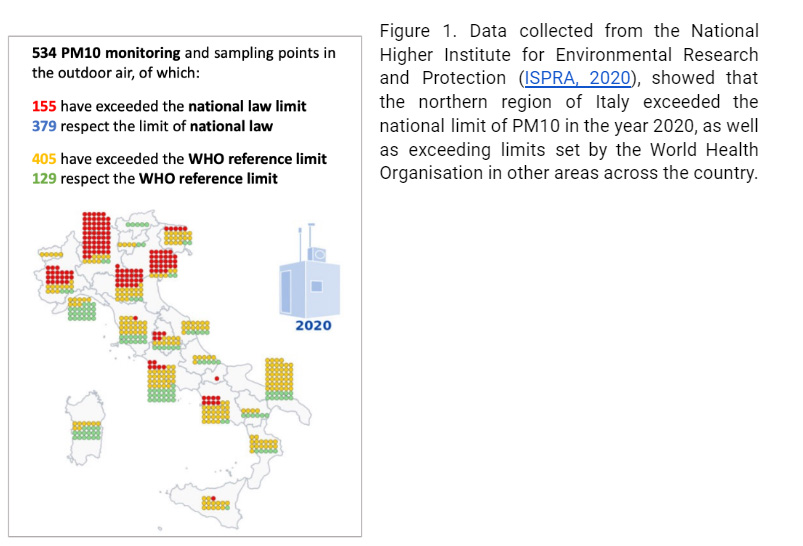
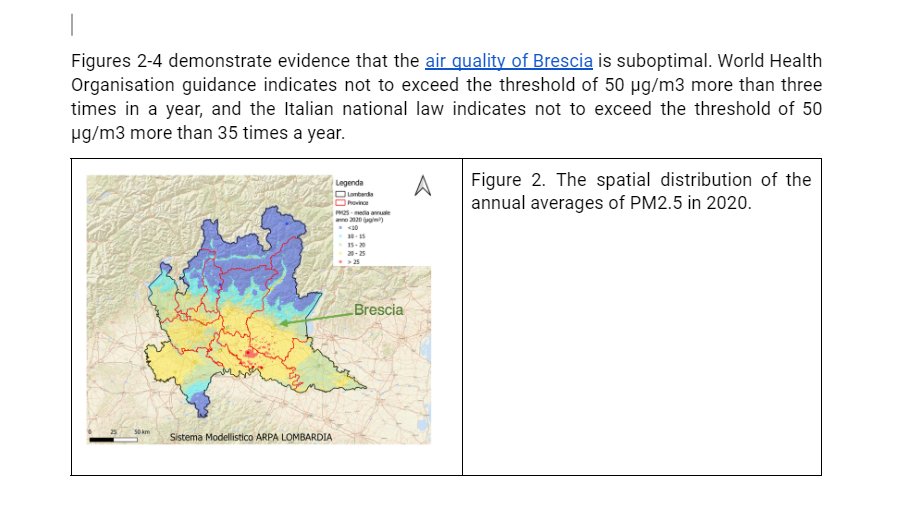
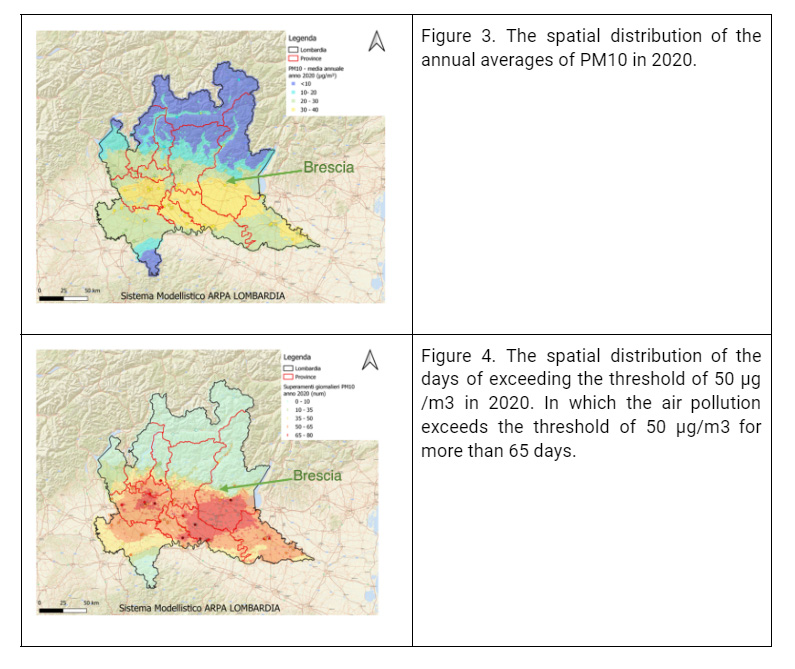
Data collection and findings
The residential home in Brescia is equipped with a controlled mechanical ventilation system. Air quality was monitored in different locations, since the flow of external air introduced by mechanical ventilation systems within the home varied. The following air quality data was collected:
Measuring the above parameters of indoor and outdoor air quality produced the following findings:
Finding 1: Higher air renewal rates required to control indoor CO2 concentrations
Data has shown that the trend of the CO2 concentration decreased over three days in the bedroom of the residential home, as indicated in Graph 1. This made it possible to optimise the calibration of the home ventilation system, with findings indicating that in order to limit the CO2 concentration to the maximum value of 800 ppm as requested by most rating systems, an air renewal of 30 m3/h per person is required.
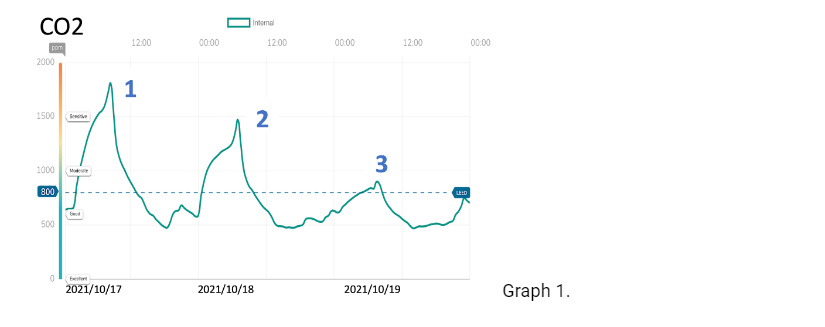
Finding 2: Controlling volatile organic compounds (VOCs) required lower ventilation rates
Interestingly, to limit VOCs below the threshold of 0.2 μg/mc in the same bedroom, an air renewal of 15 m3/h per person is adequate, as indicated in Graph 2.
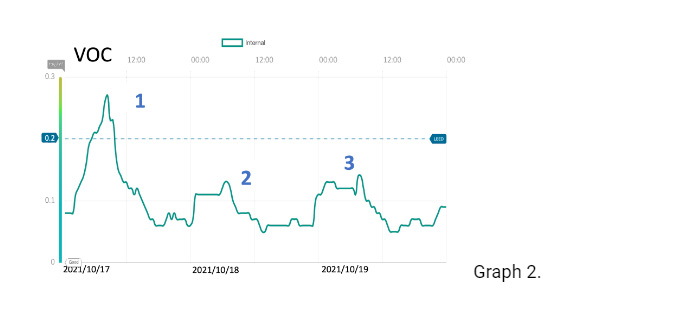
Finding 3: Mechanical ventilation maintained low levels of indoor fine dust
The value of PM2.5 was monitored in the external and internal environments as shown in Graph 3. Data indicated that during conditions of high concentration of fine dust in the external atmosphere with peaks of about 40 μg/m3, the concentration of fine dust in the internal environment was maintained at an average of 5 μg/m3.
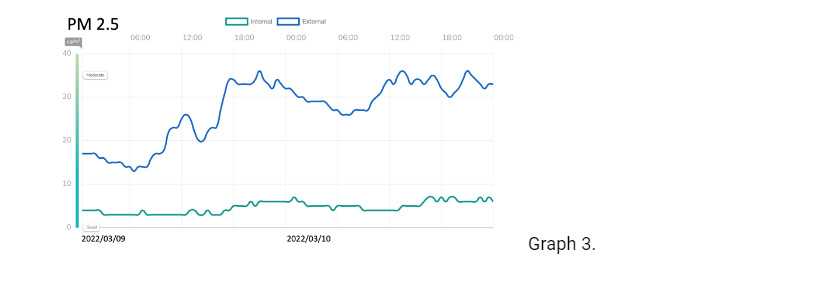
Finding 4: Mechanical ventilation maintained effective indoor humidity levels
The air quality monitors installed at the Brescia home made it possible to verify the effectiveness of the mechanical ventilation system in containing the variation of internal humidity. During the winter months of January to March of 2022, indoor humidity remained between 40-50%, while the external humidity varied between 20-100%, as indicated in Graph 4.
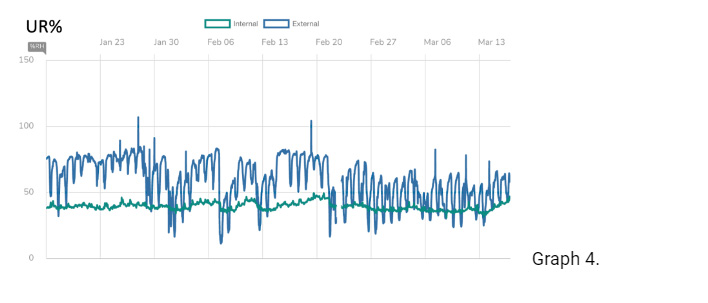
As a result of the Plant a Sensor Campaign and the installation of the air quality monitors, the data collected and analysed highlighted the importance of ventilation systems for creating healthy indoor environments.
This research has allowed the dissemination of the concept of healthier indoor environments by highlighting the importance of a holistic approach to the design, construction and management of buildings, taking into account the quality of the inhabited environment as a primary objective similar to energy efficiency and the circularity of the building. All mechanical ventilation should be highly energy efficient, using mixed mode ventilation strategies where possible.
By participating in this campaign, Green Building Council Italia was able to consolidate the relationship with national bodies such as the National Agency for Energy Efficiency (ENEA)
and the Higher National Institute of Health (ISS) to collaborate and promote the integration of internal environmental quality associated with energy efficiency. Green Building Council Italia’s goal moving forward is to continue with the collaborations in order to effectively advance proposals for public and private sector policies related to the design, construction, and monitoring of solutions for adequate indoor air quality.
2. Green Building Council Cameroon
Demonstration of poor air quality through monitoring in Cameroon.
Poor air quality has been affecting Cameroon in recent years, with the urgent need for air quality management projects becoming crucial for both public policy change and engagement of civil society. This message has been supported by Green Building Council Cameroon by its participation in the Plant a Sensor Campaign.
One outdoor and two indoor air quality sensors were installed in commercial and residential buildings in Yaoundé, the capital of Cameroon, in districts 6 and 7. The sensors collected the mean concentration of CO2, PM10, PM2.5, and total VOC in μg/m3, as indicated in Image 1.
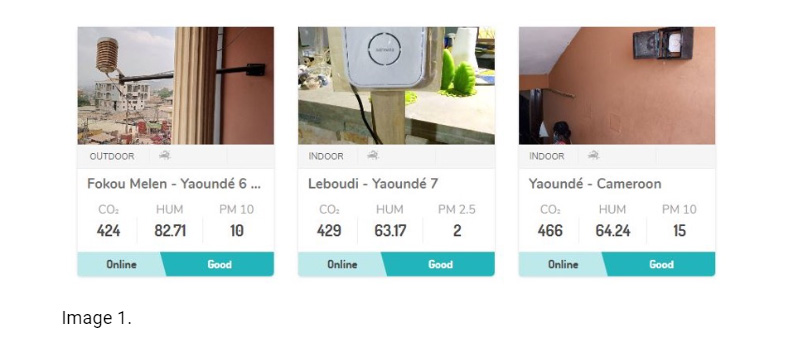
Data collection and findings
The indoor air quality data extracted from Yaoundé, located in Districts 6 and 7, demonstrates clear variation in levels of air pollution across different locations in the city. The sensors were installed in buildings of different typologies – the sensors in Yaoundé 6 are located within a workplace in a commercial building, but Yaoundé 7 is a residential property.
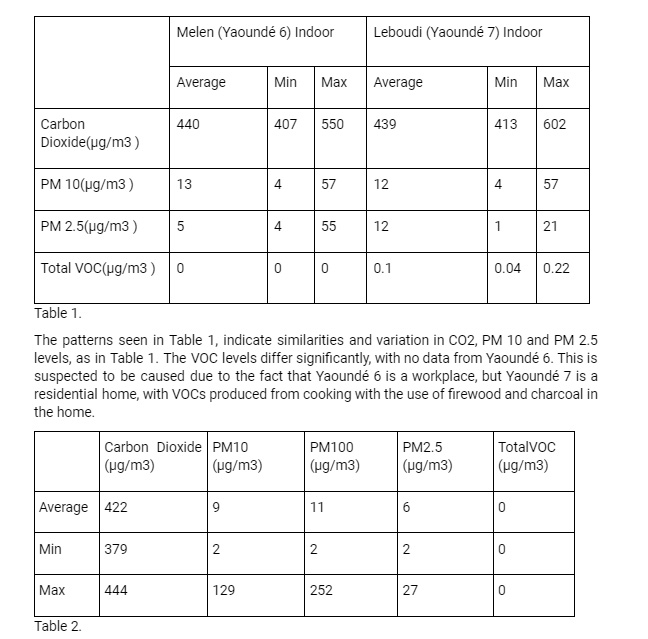
Patterns in Table 2 indicate high CO2 and PM levels in the outdoor air quality monitor in Yaoundé 6. This is due to the abundance of dust, smoke and other outdoor air pollutants. Total VOC is not measured or quantified due to heavy rains.
Data from Table 1 and 2, has shown that outdoor air quality remains higher than healthy levels in certain locations. However, indoor air quality is substantially worse.
Graphs 1, 2, and 3 below, show PM 2.5 variation in Yaoundé 6 Outdoor monitor, Yaoundé 6 Indoor monitor, and Yaoundé 7 Indoor monitor, respectively, between 5th – 10th of September 2022. Results indicate correlating air quality measurements whether it is indoor or outdoor.
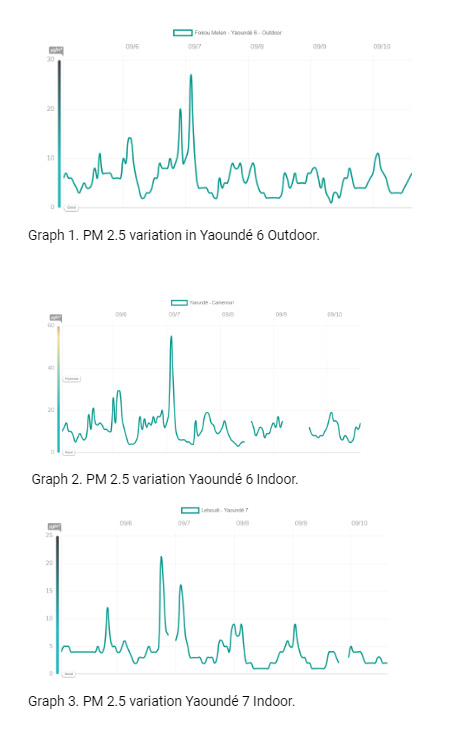
Conclusion
The data from the air quality monitors suggest that the value of CO2 in the indoor space is higher than the outdoor space, indicating that indoor air quality could be much poorer than outdoor air quality.
The challenge now is to determine the factors that could help tackle indoor and outdoor air pollution. Green Building Council Cameroon hopes to present the state of air quality and the factors explaining why indoor air quality is poorer than outdoor air quality to a wider audience. They will also continue seeking to help the population adopt measures to ameliorate their indoor air quality.
As follow on steps to this campaign, Green Building Council Cameroon intends to add measurement stations with outdoor monitors, to track changing pollution levels and evaluate the air quality levels in other localities.
3. Green Building Council South Africa
Thought leadership recognising the urgency for greater uptake of air quality monitoring in South Africa.
South Africa has had relatively good outdoor air quality, and is well monitored particularly in the major metropolitan areas. The South African Air Quality Information System reports on air quality with a user-friendly map and indicator key that allows the user to review the outdoor air quality where sensors have been installed. A number of pollutants are recorded and monitored with the aim to assist in addressing environmental links between air pollution and health as well as concentration of pollutants as an indicator of climate change. The National Ambient Air Quality Standards determine the thresholds for pollutants in order to protect health.
South Africa also has relatively good governance (including policies, regulation and guidance) on maintaining healthy outdoor air quality. However, enforcement and consequence of non-compliance is low, despite a recent ruling by a South African court that clean air is a constitutional right. The cross cutting nature of pollutants provides an additional challenge with many government departments needing to coordinate efforts and weigh in on policy and action. Awareness of the effects of poor air quality is low as well as general awareness about the importance of maintaining good air quality.
The sources of air pollution in South Africa are diverse and complex. Managing them therefore requires a multi-sectoral approach that potentially differs from region to region. In areas where major industrial and chemical production occurs, the focus is on industrial emitters, but there are other contributing pollutants that South Africans breathe at ground-level such as vehicles, veld fires, mining, waste burning, and burning of fuels such as wood or coal for cooking or heating. Pollution levels are often highest in low-income settlements, urban areas, and areas close to large industries. Oftentimes the highest levels of pollution are in vulnerable communities.
Indoor air quality
Green Building Council South Africa installed indoor air quality monitors during the period of the COVID-19 pandemic. Monitoring air quality within buildings has not been common in the majority of South Africa’s buildings and is limited to higher end commercial buildings that are typically certified. Green Star certifications and the Green Building Council of South Africa strongly support the creation of good indoor air quality and healthy places for work both directly and indirectly. New builds, Interiors and to a lesser extent, existing building ratings tools reward projects for:
There has been a debate amongst researchers and green building consultants on the impact of indoor air quality on workplace productivity. Anecdotal feedback from building managers seems to support that good indoor air quality and control has a positive impact on people. The link, while relatively easy to make in theory, is difficult to prove, so conclusive studies are required in this area to support raising awareness.
Overall, the goal of air pollution control or air quality management is to protect people, both indoors and outdoors from the harmful effects of air pollution and or toxins. The control or management of air quality requires both the technical, social and economic inputs, a combination which often leads to difficult and complex processes which require careful and ongoing management.
Conclusion
From installing the indoor sensors, Green Building Council South Africa has learned how much indoor air quality can change when compared to outdoor air quality. For example the finishes selected for the building’s interior can and do have a negative effect on the indoor air quality and the building occupants.
There is generally very low awareness in South Africa of the importance of good indoor air quality amongst building owners, business owners and building occupants, as well as the link between bad air quality and human health. Additionally, there has been very low awareness of what can be done to create better indoor air quality within buildings.
Take-home messages from Green Building Council South Africa include:
References